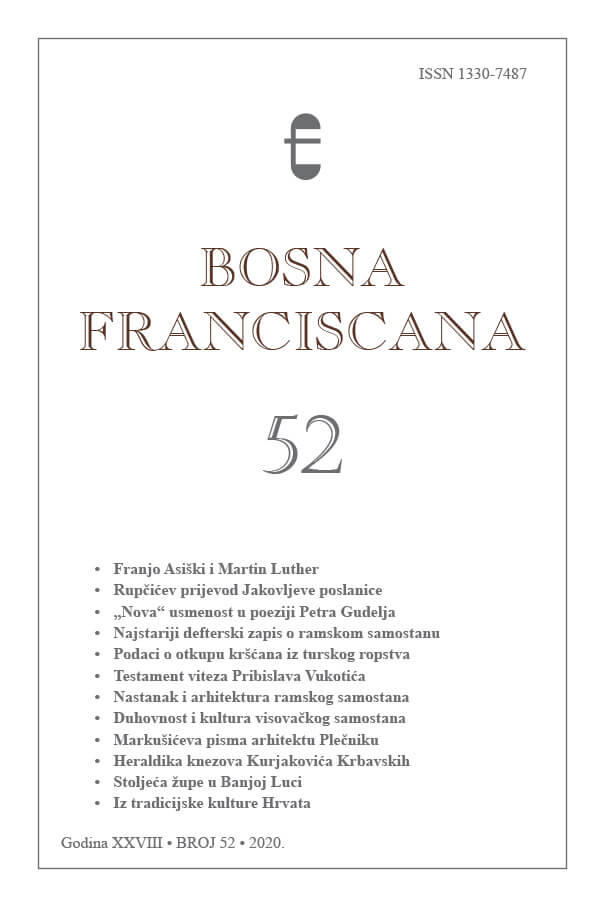Nastanak i arhitektura franjevačkog samostana Rama-Šćit
Development and the Architecture of the Franciscan Convent Rama-Šćit
Author(s): Miroslav MalinovićSubject(s): Christian Theology and Religion, Architecture, History of Church(es), Local History / Microhistory, 19th Century, WW II and following years (1940 - 1949), Post-War period (1950 - 1989)
Published by: Franjevačka teologija Sarajevo
Keywords: convent Rama-Šćit; the Franciscans; Bosna Srebrena; sacred architecture;
Summary/Abstract: The work presents the study on development and architecture of the Franciscan residence in Rama-Sćit near the central Bosnian town of Prozor-Rama. With a rich Christian history and the first convent dating back to the pre-Turkish times, this residence is especially prominent in the dawn of Turkish rule and after the establishment of Austro-Hungarian rule in Bosnia and Herzegovina. The ensemble of the convent buildings is rich in architecture, dating from the vernacular Dinaric, through Austro-Hungarian to contemporary constructions. The church, built during the Austro-Hungarian period, although destroyed during World War II, has been revitalized and artistically decorated. What makes the complex unique is the value of landscape design, which in the natural environment is enriched by the works of prominent contemporary authors. The paper presents the emergence of a residence, the development of architecture and its valorisation, as well as the treatment of the whole complex in the context of genius loci. As research sources were used the archives of the convent, as well as the published bibliography of historical value and significance. The contribution of the work is distinguished by a comprehensive study of the architecture of the complex from its establishment to the present day and its critical evaluation in the contemporary context.
Journal: Bosna Franciscana
- Issue Year: 2020
- Issue No: 52
- Page Range: 125-139
- Page Count: 15
- Language: Croatian
- Content File-PDF

